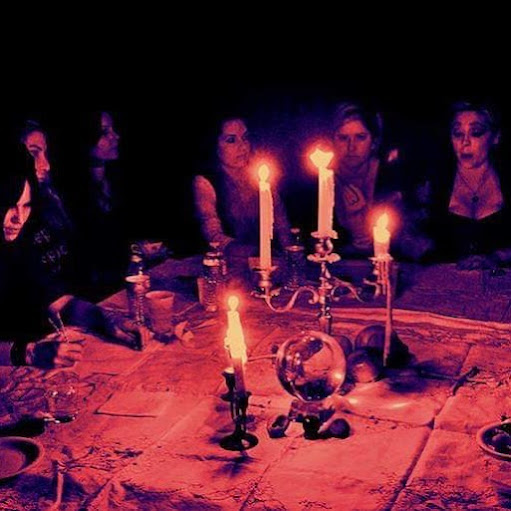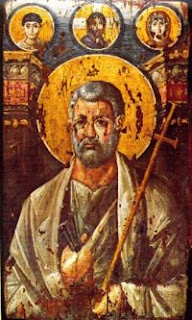Originally published at BellaOnline Mythology
Stephanie Clement is an Astrologer and author of many books, including
Meditation for Beginners
Q: You've written a wonderful book, "Meditation for Beginners" that makes Meditation, something
often difficult for Westerners to understand and apply, very accessable. I'm curious about how you reached such an understanding. How, for example, did you learn to meditate?
A: I don't know when I first learned to meditate. I recall times in church during silent prayer and vigils that seemed like meditation, but were certainly not called meditation.
My son and I took Aikido lessons together for years, and our teacher taught us Ki meditation. I also had formal instruction in meditation when I worked at The Naropa Institute, (now Naropa University), in Boulder. These three methods are quite different from each other.
Q: Why do you feel meditation is important? What are the benefits? What's the point?
A: For me personally, meditation calms my mind. Like everyone, my mind is continually working, and sometimes that work is counter-productive. Meditation helps me to clear my mind so that I can be more productive.
There are also physical benefits, such as improved breathing technique, better lung capacity, slowing the heart rate, controlling blood pressure, to name a few. If I didn't get any other benefit, clearing the mind would be a plenty good reason to meditate.
Q: Is meditation a practical, everyday thing that people can do? Does one always have to be sitting, breathing or chanting a certain way?
A: Meditation can be done just about anywhere. Of course, I don't recommend it while driving, using sharp implements, or in other situations that could be dangerous.
You don't have to sit a certain way, (I have never been able to sit in full lotus position), but you will want to be consistent in whatever method you choose. My consistent factor is paying attention to my breath.
My teachers said to follow the outward breath, and allow the inward breath the happen naturally. In Ki meditation, we learned to slow the breathing cycle, and to breathe very deeply. This technique is useful for any task that requires steadiness because steady breathing creates steadiness elsewhere in the body.
When I do walking meditation, I tend to breathe in for a certain number of steps, and then breathe out for a certain number. But don't let the counting become the focus!
Q: If we do this, how long will it take before we begin seeing and/or experiencing results from meditation? What will these be?
A: Many people experience the general calming effect almost immediately. In addition, with practice the calming occurs within just a few minutes. Most people can sense, if not actually track, the slowing if the pulse and the relaxation associated with slightly lower blood pressure.
This could take a bit more time to occur, but within a week of short daily meditations, you will begin to feel the general relaxation. If your meditation involves walking, yoga, or other movement, you will also feel a sense of greater confidence in the movement as you practice, and you will also develop greater strength.

This level of change depends on how long you meditate each day, and how strenuous the yoga practice is. When I was learning kundalini yoga, it took several months to get strong enough to complete many of the asanas, and some I never mastered to any degree. I did get stronger, though, and my endurance improved.
Q: What can we expect to experience when we meditate?
A: This depends on what style of meditation you choose. In sitting meditation, you may experience both a relaxation of mind and body, and from time to time, the stiffness that results from sitting still. Sometimes a foot or leg will go to sleep, so it is always a good idea to get up slowly and test your balance.
You may experience the repetitive quality of your thoughts. When this happens, you can simply return to the meditation, following the breath or focusing on the yoga, or whatever is appropriate.
Eventually you will experience gaps, during which you seem to have no thoughts. This can be startling at first, but it is a natural outcome of meditation. If there is a gap, there is room for a new insight.
Q: What are 'altered states of consciousness'? Does that mean we see things when we meditate? Will we always walk around in an 'altered state' once we reach one?
A: My hypnotherapy teacher said that we are all in an altered state of consciousness moment to moment. Each time I respond to a new question in this interview, my state of consciousness changes.
Some people do "see" things differently, or hear things. Sometimes it seems like normal sounds recede from awareness. In meditation, sensations arise and shift.
Occasionally people see what I call waking visions. These often have a dream-like quality, but seem quite solid and real. When intuition is active, you may have sudden insights or answers to questions that you have been unable to resolve.
Q: Most of us feel we already don't have enough time to do everything we need to do, how can we find time to meditate? Doesn't it take a long time? Do we have to do it every day?
A: Yes, meditation is best done every day. You can start with as little as five minutes. We can all find five minutes a day to just sit, or just follow our breathing while in the shower, or focus while we are walking.
The five minutes may eventually expand, or it may not. It doesn't matter. Some days I spend more time, and others less. The focus and attention are more significant than the amount of time spent.
Q: How can meditation be used for self-discovery? Can it also be a self-help tool?
A: Meditation is a good self-help tool. First, it inspires a certain degree of self discipline, you do it every day. It also means that for a few minutes each day, you are doing something by yourself, for yourself. Even if you do meditation with a group, it is essentially a solitary activity, and it is for yourself.
The self-help or exploration occurs naturally. You become oh, so familiar with your discursive thoughts! You begin to see how yur mind really works when you are not paying attention, and you may find that your general habits change somewhat as a result.
I found that meditation was a good way to pay attention to my intuition. by paying attention, you honor that capacity in yourself, and you find that intuition then comes more easily. The same is true of any skill -- if you pay attention, you develop greater skill, and mediation helps.
Q: Can meditation really 'enlighten' me in the Nirvana sense? Is that something a beginner should even try to think about?
A: Hmmm ... Enlightenment is both elusive and subjective. One day I feel somewhat enlightened and self-realized. Another day I feel so ordinary!
The Buddha himself meditated until he realized the true nature of existence. While he was an extraordinary person, he was human. We all can come closer to self-realization if we are seeking to do so, and meditation is a component of my path, certainly.
Some teachers say that it only takes a moment to become enlightened. My sense is that there is a catch, you have to be aware when that moment comes. Hence the practice of meditation to help you develop awareness and clarity of mind.
Q: There are several kinds of meditation, how do we know which is right for us individually? They all seem so different.
A: I recommend trying different styles of meditation to see what feels right for you. If you are limber as a noodle, then yoga will be fun. If not, you can try something that provides structure without also causing too much pain.
If you can't walk, then sit. If you can't sit easily, then walk. Even reclining or lying flat works, although I find that I go to sleep if I lie down.
Q: Is meditation like dreaming?
I don't find meditation to be like dreaming. I do occasionally see images that resemble dream images in the fact that they are not material. Meditation is a conscious, waking activity, and dreams occur during sleep, which is defined as a less conscious state.
The kind of intuitive insight that I sometimes experience is also not like a dream, although I sometimes wake up with a similar Aha! experience. This suggests that intuition does arise through dreams.
Q: Can meditation improve our health? If so, how?
A: Meditation can improve your health. You will notice that your breath deepens and lung capacity may increase, or at least you experience fuller lung capacity. Many of us use only the top portion of our lungs, and meditation on the breath helps to expand the use to the lower lungs. I imagine breathing all the way into my belly, particularly in specific yoga asanas.
The capacity to relax become a natural outcome of meditation. Then in extremely tense situation, you can do what you do when meditating and cause relaxation to occur. You have trained yourself to relax, your body remembers, and cam relax more or less on demand. I have heard and said, "Take a deep breath," so many times that now it automatically results in a relaxation of the diaphragm, and a more general relaxation as well.
I have already mentioned slowing the pulse, lowering blood pressure, and hinted at the relaxation of tense muscles. Meditation allows a few minutes each day for the body to do what it is supposed to do naturally, instead of what we push it to do. That is healthy.
Q: Tell us, more specifically, how your book, "Meditation for Beginners" can serve as a practical guide for all of this.
A: "Meditation for Beginners" was written for people who have never tried any systematic meditation, or who don't know what will work for them. There are numerous exercises throughout the book to help the reader try out different techniques, and to get a glimpse of what meditation can be like.
Many people can't go to a meditation center for lessons, and this book provides suggestions that are safe, relatively easy, and require almost no equipment except comfortable clothing. My granddaughter showed us, when she was only five, that her body knows exactly how to sit properly and meditate. My grandmother, when she was quite elderly, spent time very day (in quiet thought, she would have said).
We can all do this, and if fact we all do meditate. We just don't call the activity meditation. Orderly daily meditation is a valuable practice that makes life, for me, more peaceful.









































